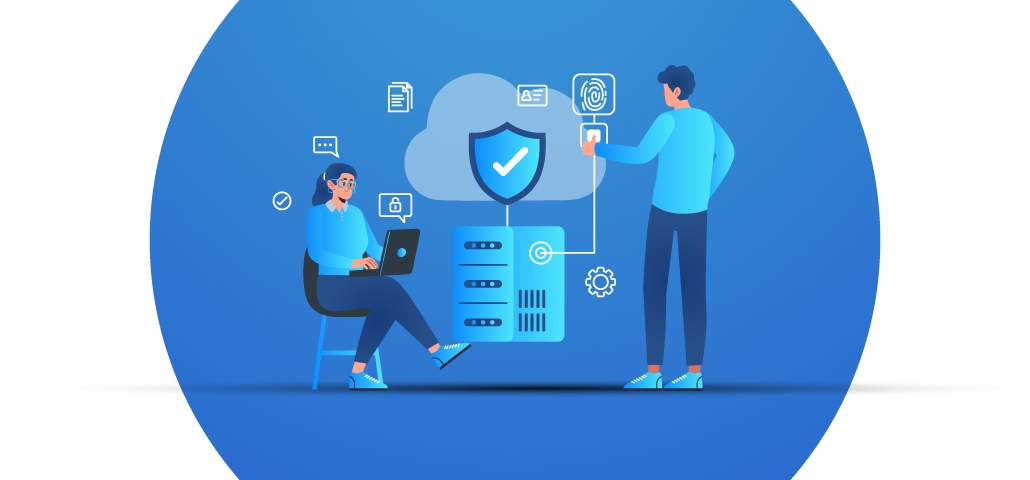Cloud Security Best Practices
 Admin
Admin Cloud
Cloud Dec 13, 2024
Dec 13, 2024

Table of Content
Navigating cloud security feels overwhelming. You’ve adopted the cloud for its flexibility, scalability, and cost-effectiveness, but now you’re worrying about misconfigurations, data breaches, and evolving cyber threats. Sound familiar? Maybe you’re an IT manager trying to enforce policies across a hybrid environment or a startup founder concerned about customer data. Either way, you’re not alone.
In this guide, you’ll learn actionable cloud security solutions best practices to safeguard your business. We’ll cover strategies like encryption, access control, and monitoring misconfigurations.
Why Cloud Security Is Critical
Cloud computing is booming, but so are the risks. According to industry reports, 82% of cloud breaches stem from misconfigurations. Combine that with insider threats, evolving ransomware tactics, and a lack of proper security controls, and it’s clear why cloud security ranks as a top concern for 65% of IT professionals.
It’s not just about breaches, though. Regulatory frameworks like GDPR, PCI DSS, and India's IT Act 2000 demand secure handling of sensitive data. Failing to meet these requirements could result in fines, legal troubles, or a tarnished reputation. Security isn’t just a necessity; it’s the backbone of trust in today’s digital-first world.
1. Understand the Shared Responsibility Model
Here’s the deal: Cloud providers like Azure, AWS and Google Cloud handle infrastructure security. But the application, data, and access? That’s on you. This shared responsibility model often trips up businesses because it’s easy to assume the provider has it all covered.
To tackle this, familiarize yourself with your provider’s responsibility matrix. For example, while AWS secures physical servers, you’re responsible for enabling encryption and securing user access. Implementing role-based access control (RBAC) and using native security tools will help you fill your side of the responsibility gap.
2. Don’t Let Misconfigurations Be Your Weak Spot
Misconfigurations are the silent saboteurs of cloud security. One unchecked public bucket or an overly permissive API, and you’ve opened the door to attackers.
Automated tools like Cloud Security Posture Management (CSPM) are game changers here. These tools detect and alert you to issues like unencrypted data or open ports. Another pro tip: Use Infrastructure-as-Code (IaC) templates to standardize configurations and reduce human error.
3. Adopt a Zero Trust Approach
Gone are the days of trusting everything inside your network. Zero Trust flips that script, assuming every connection is untrustworthy until proven otherwise.
This starts with enforcing least privilege access. Employees only get the data they need to do their job—no more, no less. Add multi-factor authentication (MFA) to the mix, and you’re significantly reducing the chances of unauthorized access. To go further, consider conditional access policies that adapt based on user behavior, location, or device security.
4. Lock Down Identity and Access Management (IAM)
Weak or stolen credentials account for a big chunk of breaches. Identity and Access Management (IAM) systems are your shield. With IAM, you can control who gets into your cloud environment and what they can do once inside.
A few IAM best practices:
- Enable MFA everywhere—it’s a simple yet effective barrier.
- Use role-based permissions rather than blanket access.
- Regularly audit your access logs to catch anomalies early.
The Ministry of Electronics and Information Technology (MeitY) also emphasizes IAM as a cornerstone of cloud security. They recommend integrating it with compliance tools to ensure roles and permissions align with regulatory requirements.
5. Secure Data at Rest and in Transit
Encryption is non-negotiable. Whether it’s data stored in your cloud or data moving between systems, encryption ensures it’s useless to prying eyes without the proper keys.
Adopt Advanced Encryption Standard (AES-256) for data at rest. For data in transit, use TLS 1.3 for secure communications. Tools like AWS Key Management Service (KMS) and Azure Key Vault help you manage and rotate encryption keys without hassle.
6. Monitor, Log, and Respond Proactively
Visibility is everything in cloud security. Without it, breaches can go unnoticed for weeks, even months. Centralized logging solutions like AWS CloudTrail or Azure Monitor give you a clear view of what’s happening in your cloud environment.
Use a Security Information and Event Management (SIEM) tool to analyze logs for anomalies. And don’t just log incidents—respond to them. Automated alerting systems can notify you in real time when something suspicious occurs, ensuring faster resolution.
7. Protect Your Perimeter
Cloud networks are more flexible but also more vulnerable. Without robust perimeter defenses, you’re leaving your environment open to SQL injections, DDoS attacks, and other threats.
Start with virtual private clouds (VPCs) and segment workloads into isolated environments. Add network firewalls to block unauthorized traffic and intrusion detection systems (IDS) to flag unusual activity.
8. Train Your Team to Be Security Aware
Your people are often your weakest link—or your strongest defense. It all depends on how well they’re trained. A phishing email can bypass even the best firewalls if your staff isn’t prepared to spot it.
Conduct regular security awareness training. Teach employees how to recognize social engineering tactics and enforce strong password hygiene. MeitY also suggests scenario-based simulations to keep teams sharp and ready.
9. Backup and Disaster Recovery Are Must-Haves
Things will go wrong—it’s a question of when, not if. The difference between a minor hiccup and a major disaster often boils down to your backup and recovery plan.
Use tools like Azure Backup or AWS Backup to automate data replication across multiple regions. Test your disaster recovery plans regularly to ensure they work under pressure.
10. Comply or Risk Consequences
Compliance isn’t just about avoiding fines; it’s about earning trust. Regulatory frameworks like GDPR and PCI DSS aren’t optional—they’re the baseline for doing business in many sectors.
MeitY emphasizes the importance of aligning cloud security practices with compliance requirements. Use automated compliance checks to stay on track, and conduct regular audits to identify gaps before regulators do.
11. Consolidate Your Cybersecurity Tools
Juggling multiple tools for endpoint security, identity management, and workload protection can get messy. Consolidation isn’t just about convenience; it improves visibility and reduces the risk of configuration errors.
Solutions like Crowd Strike's CNAPP combine features like workload protection, threat detection, and compliance monitoring into one streamlined platform.
12. Keep Learning and Adapting
Cyber threats are always evolving. What worked last year might not cut it today. Staying informed is critical to staying secure.
Attend security webinars, subscribe to threat intelligence feeds, and stay up to date with emerging best practices. The global cloud security market is expected to hit $68.5 billion by 2025, reflecting the growing complexity of this landscape. Don’t fall behind.
Final Thoughts
Cloud security doesn’t have to be overwhelming. By following these best practices you can protect your business, meet regulatory requirements, and build trust with your customers.
Security is an ongoing process, not a one-time project. But with the right tools, strategies, and mindset, you can navigate this complex world confidently.
Get in touch

